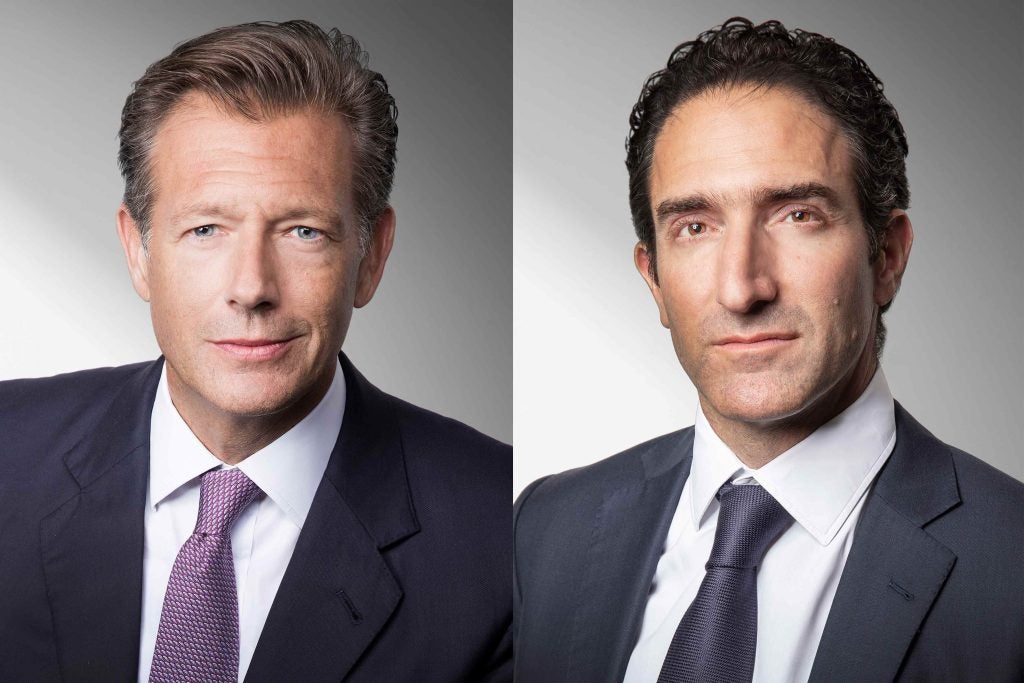
Private banking is a relationship business, and always will be. However, many wealthy clients are expanding their friendship circle and have more than one relationship with advisers. How can firms keep their client bases strong? And how can they gain even more? Alison Ebbage writes
Wealth managers and private banks are always on the lookout to acquire new clients.
With the market in the middle of a vast ongoing transfer of wealth, the stakes are high. Not only do wealth managers and private banks need to try to keep existing wealth as it passes through the generations, they also need to attract new clients.
This also needs to be achieved in an age where expectations are high, clients are not afraid to shop around and relationships with more than one wealth manager are
commonplace. As a result, relationships are diluted, and it is emotionally easier for a client to jump ship.
What then can private banks and wealth managers do to showcase their wares to potential clients?
Certainly the role of technology in making this connection successfully is key. Younger generations have high technological expectations and tend to go for a digital-first approach. Any private bank worth its salt knows that.
How well do you really know your competitors?
Access the most comprehensive Company Profiles on the market, powered by GlobalData. Save hours of research. Gain competitive edge.

Thank you!
Your download email will arrive shortly
Not ready to buy yet? Download a free sample
We are confident about the unique quality of our Company Profiles. However, we want you to make the most beneficial decision for your business, so we offer a free sample that you can download by submitting the below form
By GlobalDataThis has been put into sharp focus by Covid-19, which has put an end to face-to-face meetings and social engagements, and instead placed a huge revelatory beam of light over the extent to which a wealth manager can leverage everything that is digital and continue to uphold a meaningful and functional client relationship remotely.
Speaking to PBI, Alessandro Tonchia, CEO at Finantix, comments: “Wealth managers know that expectations as regards service provision and digital enablement have changed. They have to be able to show the younger generation that they are up to speed, and prove to the younger generation can engage with them and trust them and meet their needs. They also know that if they cannot leverage technology to attract new clients, then there are plenty of others out there who can.”
Wealth Dynamix CEO Antony Bream, meanwhile, thinks the market is worth is around $260m.
“Attracting and converting a share of that means revenue growth in the region of 30%,” he says. “But getting it wrong could mean losing as much as one third of wealth under management if people go elsewhere.”
Data
Data is at the forefront of this particular conundrum.
Gathering and analysing data to identify prospects and work out where the sweet spots are likely to be provides internal efficiencies, in that the adviser does not waste time on something that is unlikely to work out. This means the adviser can concentrate efforts where they are most likely to succeed.
Bream comments: “The acquisition process at the front end needs to be digital and flexible. If the wealth manager cannot tap into data and make sense of it to prospect and then woo the potential customer and show them what they can do, then there is no real reason for the customer to even show an interest, never mind engage and then come on board.”
Discovery of new leads is certainly something that can be vastly enhanced by technology. It can be as simple as monitoring the press or social media for events that create liquidity, or someone moving to a different place or picking up on any change of circumstance that might generate a wealth management need.
Speaking to PBI, Pius Stucki, CEO at Etops, notes: “A digital workflow can pick up on both structured and unstructured data. Data pulled from sources like LinkedIn, ratings agencies, charities and other linkages can be picked up on and used with other, more structured data to identify and then find out more about what kind of person the potential client is, and therefore be able to create a more personalised proposition for them.”
Stucki believes AI and machine learning have a pivotal role to play here, because they are efficient and accurate when it comes to segmenting and identifying similar groups of people.
This gives the wealth manager the intelligence to devise a marketing plan that is likely to appeal to that individual, and then decide which relationship manager would have the most affinity and empathy with a particular client. He cites one good example of this: ESG.
“ESG is an increasing concern, and many clients now want some sort of ESG overlay as standard. Within a broad ESG overlay people have their own causes, so being able to find out what they are and then match that with a tailored service proposition and well-matched relationship manger can only be a good start to an ongoing relationship,” he says.
Tonchia adds: “It is about showing potential clients that you can understand their wealth flows and specific circumstances, and have the techniques and the knowledge to be able to optimise any given situation or circumstance. This could also include mocking up recommendations and providing insight and commentary over a three- to six-month period that would show how the wealth manager could react to the markets gyrating or another unexpected event, and basically demonstrate that the means to provide an insightful and personalised service digitally is there.”
Bream adds that making and keeping clients emotionally connected is as much about the day-to-day planning as it is about picking up on little things, like a new interest or connection the client may have made.
Importantly, he says it is also showing that the wealth manager can pick up when someone is unsure or unhappy and remedy that – not just responding to the client but also anticipating their needs.
“Tracking client sentiment is very doable and so worthwhile. There are apps that can monitor all types of communication and scan for negative or positive words and the frequency of contact that might suggest a review or a new suggestion or approach. This gives the ability to know the client better than they know themselves – the technology can pick up on preferences and detect if someone is not happy, and all this adds up to better service.”
Bream says that ultimately, proper data analytics and AI provide a better return on marketing investment. Doing this successfully can double the amount of recommendations and reduce churn by up to a third.
“It is all about the extent to which the prospect or existing client feels an emotional attachment with the wealth manager, and then converting a prospect into a client,” he states.
It is not only what you can do; it is also very much about the way that you can do it. Wealth managers need not just the intelligence to know what to do and say, but the technology to be able to reach out and meet the potential client where they are. And this means digital.
Digital first
Stucki says: “The wealth manager needs a good range of functionality to tempt prospects. Screen sharing, real-time data, e-signatures, targeted research and visualisation services all combine to show the younger generation who are getting wealth transferred to them that the levels of service and the methods of service are worth having.”
And Bream comments: “Any wealth manager now needs the software to allow for a digital-first approach. This has gone far beyond things like emails and e-signatures. It’s about having the means to support a given process from start to finish remotely, and over the channel of the client or prospect’s choosing.
“It is vital to offer this, because otherwise the potential client is going to feel like it is hard to deal with a wealth manager, as opposed to easy, seamless and satisfying.”
Bream continues: “An emotional connection is key. The idea is to show a potential client what they can expect in terms of functionality and process, and leave them not just satisfied but also wanting more, and with the trust and knowledge that the wealth manager can support their needs no matter what. By doing this, we think you can increase AuM by a factor of six, and double recommendations.”
Onboarding comes next, and again this needs to be a pleasing process that is as hassle-free as possible. This relies on having a smooth, once-only approach to data where a slick approach is to ask for data once and use it many times, rather than the other way round.
Conversion and beyond
Again the analytic capability to add unstructured data to that provided by the client means a whole-of-client holistic view which, once onboarded, gives a client’s adviser
better ‘next steps’ suggestions and means they can be proactive and really hone in on the level of personalisation and as much automation as possible.
Tonchia comments: “Once it comes to conversion, the wealth manager needs to show
that there will be minimal form filling, that the process will be as smooth as possible, and that there will be a good deal of coordination. It needs to be a stress-free experience.”
Having the right technology tools in terms of gathering and using data, and also in terms of interacting with potential clients and converting them, is therefore key. But are systems ready? Can the technology support digital processes and data-driven decision making?
Bream comments: “The process should drive the system, not the other way round. Architectures that were first installed 20 years ago when people were just starting to look at driving automation are still in place.
“Those characteristics – notably the account number being top of the data hierarchy – are still in place, but it’s no longer a good way to do things in a world where people have multiple accounts and take various services from various providers. This sort of thing was driven by back-office systems and old procedures, and wealth managers are trying to get round that by looking at better ways to do things.”
Dealing with old architecture is indeed hard.
Stucki says: “To be successful, the wealth manager needs to have the tech that fits this new way of working rather than trying to shoehorn not-quite-fitting technology into it new processes.
“Often something that can be easily installed maintained and upgraded in an SAAS-based solution is ideal, as it is basically the function as a service that can sit on top of existing systems.”
Bream describes this as an “orchestration layer” that is closely linked to the CRM.
“The CRM could even be described as an early iteration of what is now needed,” he explains.
“CRMs need to deal with vast swathes of data generated by regulation. They need to be able to feed data from the CRM to back-office systems and then pushed out to regulators again. This is an early example of a process where data needs to be collected, analysed and also travel electronically from one place to another.”
“Today,” he says, “the technology supports that workflow by giving information that enables a proactive approach in terms of the intelligence and then the digitised channels allow for that service to be delivered in a way that is likely to appeal to those who have newly acquired wealth and form an emotional connection and perception that they are being well looked after.”
And Tonchia concludes: “The digital play means that you can service the client in the way that best suits them. But this is all reliant on having the technology to make use of the intelligence – being able to find the signal in the noise and then act of that. The data drives the process and the knowledge is the power of what that process should be. The tech structure needs to support whatever the right process for that client is.”







